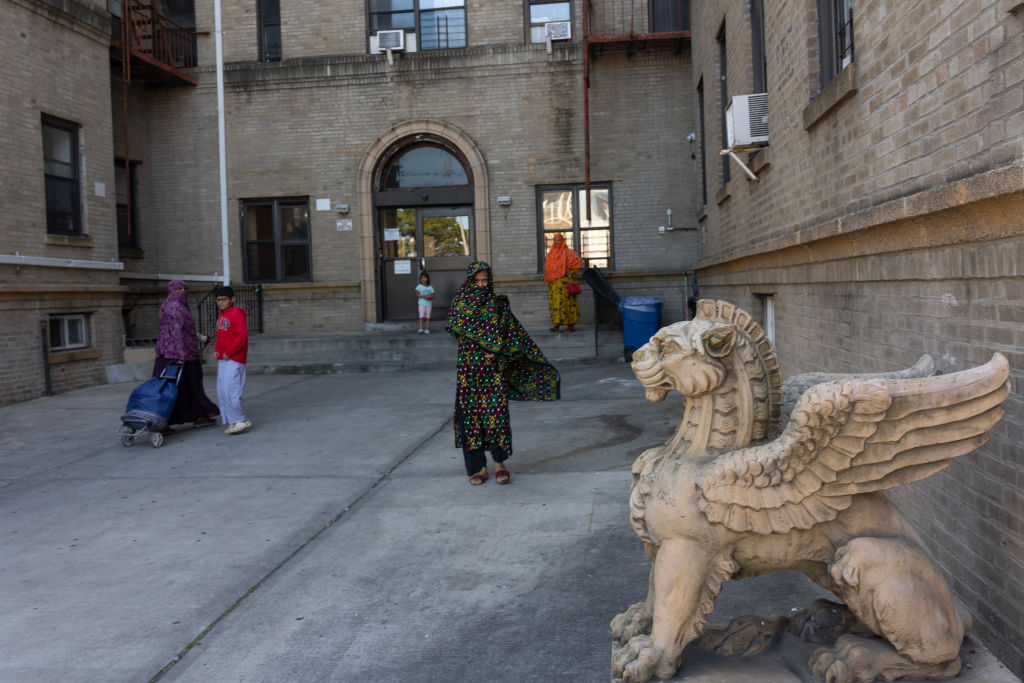With child care unaffordable, many parents struggle to stay employed
Laura Pacific would love to find a job — if she could afford child care for her 10-year-old son.
The 35-year-old single mom faces a common predicament for many U.S. parents, and especially women, as they juggle soaring chlld-care costs and the need to earn a living in a precarious labor market. The going rate for her day care needs where she lives in Phoenix, Arizona, is between $600 and $800 a month — more than Pacific's monthly rent.
"Day care is absolutely essential and if you don't have it, it stops a lot of the opportunities you would have outside of the home," Pacific told CBS MoneyWatch. "They say there are a lot of jobs right now, but because of the child-care situation I am not able to take advantage of any of them."
Low-wage earners in particular are struggling to secure affordable child care as the industry grapples with financials that don't add up for day-care operators, families and workers.
The Biden Administration is proposing a hefty investment in child care as advocates say federal intervention is critical to fix what the Treasury Department last month called a system that "fails to adequately serve many families."
Currently, the average family with at least one child under age 5 spends roughly 13% of their income on child care, making it unaffordable to most families. President Biden's Build Back Better Agenda aims to subsidize care and related costs so that families do not have to shell out more than 7% of their income on child care.
"We have circumstances where what parents can afford is directly linked to what teachers in child care programs are paid. So it is not about what it costs to deliver child care or what people need to have decent benefits to be child-care teachers because there is so little public money in the system," said Lea J.E. Austin, director of the Center for the Study of Child Care Employment.
Child care costs vary widely by state. In Alabama, for example, the average annual cost of infant care is roughly $6,000, or $500 a month, according to the Economic Policy Institute. But in California, the average annual cost of infant care is nearly $17,000 a year, while in Massachusetts it approaches $21,000.
"If you look at child care, it was a field that was on shaky economic ground before COVID," said Rhian Evans Allvin, chief executive officer of the National Association for the Education of Young Children, an industry advocacy group. "Supply and demand rarely meet. It's also expensive to run a child care center and expensive for families to access child care."
"They would rather mix milkshakes"
A key challenge for child-care providers — one that's become more pressing during the pandemic: Finding workers, with many having quit during the health crisis and now opting for other work.
"Part of the issue is early-childhood educators are finding employment elsewhere in jobs that often pay the same and are less exerting than spending the day with young children," Allvin said. "They are going to fast-food restaurants — they would rather mix milkshakes, or for summer jobs folks go to country clubs and take beach-related jobs, or work for Amazon and in retail-type jobs."
Rochelle Wilcox, an industry veteran who operates three early learning centers in New Orleans, Louisiana, said it is nearly impossible for workers to earn a decent living. "The biggest challenge is that early learning is severely underfunded, and that means we can't pay our teachers a livable wage."
Several teachers at her schools have quit during the pandemic. She's bumped up pay to at least $14 an hour in a bid to retain her other employes. But with the narrow profit margins that are typical in the child-care industry, that also means raising rates beyond the reach of many households with less disposable income.
"My goal is to serve low-income children, and it marginalizes the very children we want to serve. But we've marginalized them because we have increased our rates to keep up with staff salaries to keep up with what's going on," Wilcox said.
No-shows at interviews
Indeed, operators like Wilcox are struggling more than ever to staff their facilities with qualified workers, as early educators quit and seek less demanding, better-paying jobs, or bypass the industry altogether.
Wilcox said that, ideally, she'd like to hire an additional nine staffers today. Yet while she recently lined up four job candidates, all failed to turn up for for virtual interviews.
"None of them showed up. This is something we are dealing with in real time. The fact is I have four empty classrooms that are waiting for little people to come in, but we are unable to open those classrooms, and we cannot serve the families in our community," Wilcox said.
She noted that many workers have left the industry for jobs in the public school system, where they make roughly $16 plus benefits, or for positions at Amazon.
"I can't blame them. I can't be mad at them and say, 'No, don't go take care of your family,'" Wilcox added.
Early childhood educators across the U.S. earn a median wage of $11.65 an hour, according to the 2020 Early Childhood Workforce Index from the Center for the Study of Child Care Employment (CSCCE) at the University of California at Berkeley.
Four in five child-care centers in the U.S. are understaffed, according to a July report from NAEYC, which surveyed 7,500 early childhood educators. Roughly 8 of 10 respondents cited low wages as the main obstacle to recruiting educators, while 81% said insufficient pay is the main reason educators leave the field. More than a third of child-care providers said they are considering quitting or closing down their businesses within the next year, according to the same report.
Davina Woods, a day care owner and operator, is accustomed to losing staffers as they gain more experience. Now, she fears young people who once would've considered early-childhood education as a career will steer clear.
"We were formerly used as a stepping stone, but now in the pandemic teachers are circumventing us altogether. And those in the field are increasing their education and making their way out. The hiring is quite nightmarish at this point," Woods told CBS MoneyWatch.
Not enough slots for kids
Further reducing the availability of child-care: Many facilities have had to slash their capacity because of understaffing and because of the need to maintain social distancing as young children remain unvaccinated.
"We are fully aware child-care tuition for many families is upward of their mortgage payments if not more. What we say here in the trenches is our tuition doesn't even being to cover costs of the actual care we provide," Woods said.
As a result, many parents remain on the sidelines after being laid off or leaving their jobs to care for their young children early in the pandemic, when many child care centers closed or shut down temporarily over concerns of spreading COVID-19.
Nearly 1.6 million moms of children under 17 are still missing from the labor force, federal labor data shows. Meanwhile, more than 126,000 workers are still missing from the child-care services industry.
Pacific, the mother from Arizona, said that while money was tight even before the pandemic, she was able to make ends meet with her son in day care.
"I had a job and qualified for subsidized child care. I made within the range to qualify and everything was working fine. The [school] bus picked up and dropped off at day care and I would come after work and pick up my son," she said. "It was still tight but we were still making it."
"Craziness"
Because day care slots are so limited, families that can afford costlier in-home care are hiring nannies instead.
"What we're seeing now is craziness. Pricing has gone up across the board, and what families have to spend to get quality caregivers or child care is really difficult especially for single, lower-income families," said Carole Kramer Arsenault, the founder of Boston Baby Nurse & Nanny, which places nannies in homes.
Nanny rates have increased from between $18 and $25 an hour to $30 to $50 an hour. Workers are leaving day-care centers to work for private families where they can earn more.
"Nannies going family to family and saying, 'Where can I get the highest price?'" Arsenault said.
As a result, families seeking child care find themselves on day-care center waitlists, or simply unable to afford in-home care.
"So moms decide to stay home because financially it makes sense," she said. "Finding affordable care for their child means leaving work altogether, which is a massive financial it for the family."
Long-term impact
Research from the Federal Reserve Bank of Kansas City shows that non-college educated women face a steeper road to recovery compared to women with college degrees. The burden of caring for young children further hinders them in joining the labor force.
"Anecdotal evidence suggests non-college women with children were impacted because of the cost of child care to low-income individuals, and because they might be living in areas where child care was already limited pre-pandemic, and then these options were more rapidly eliminated than in other areas," said senior economist Didem Tuzemen, the author of the report.
"So it's the combination of not having child-care facilities around and then the cost increase for these workers. It's definitely a risk that long-term job losses and being away from the labor force will have long-term effects on future participation rate of these women," she added.






